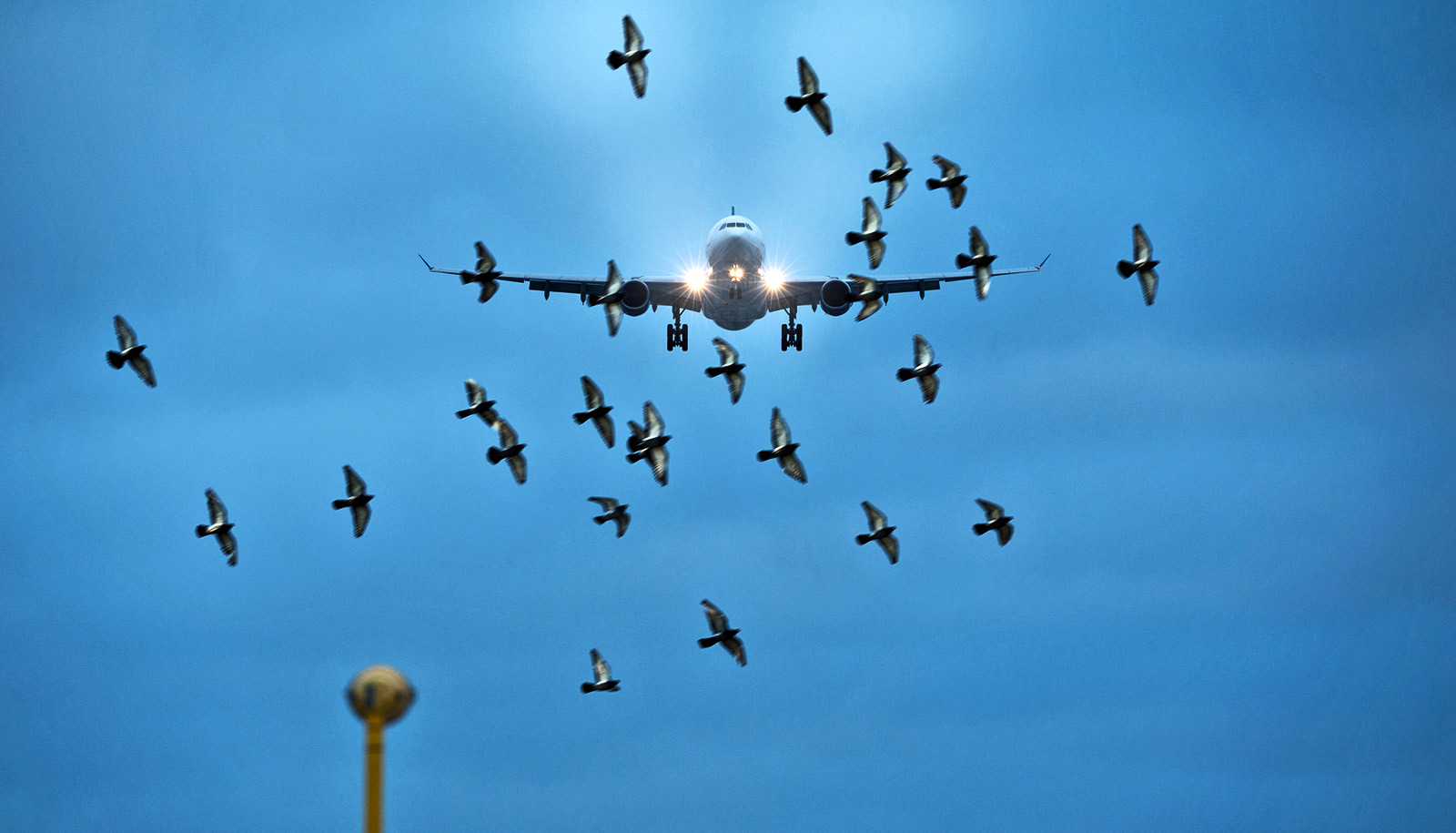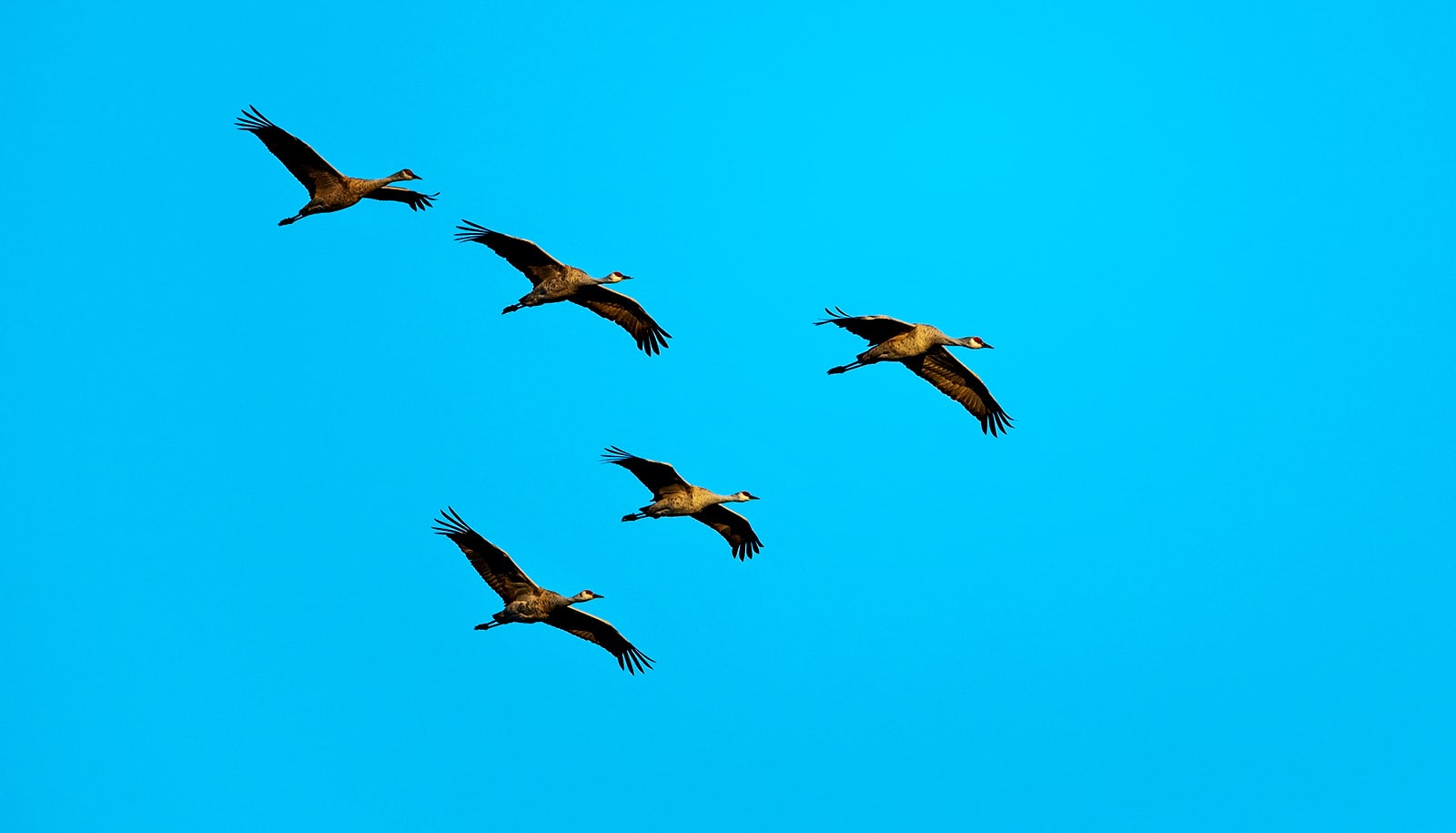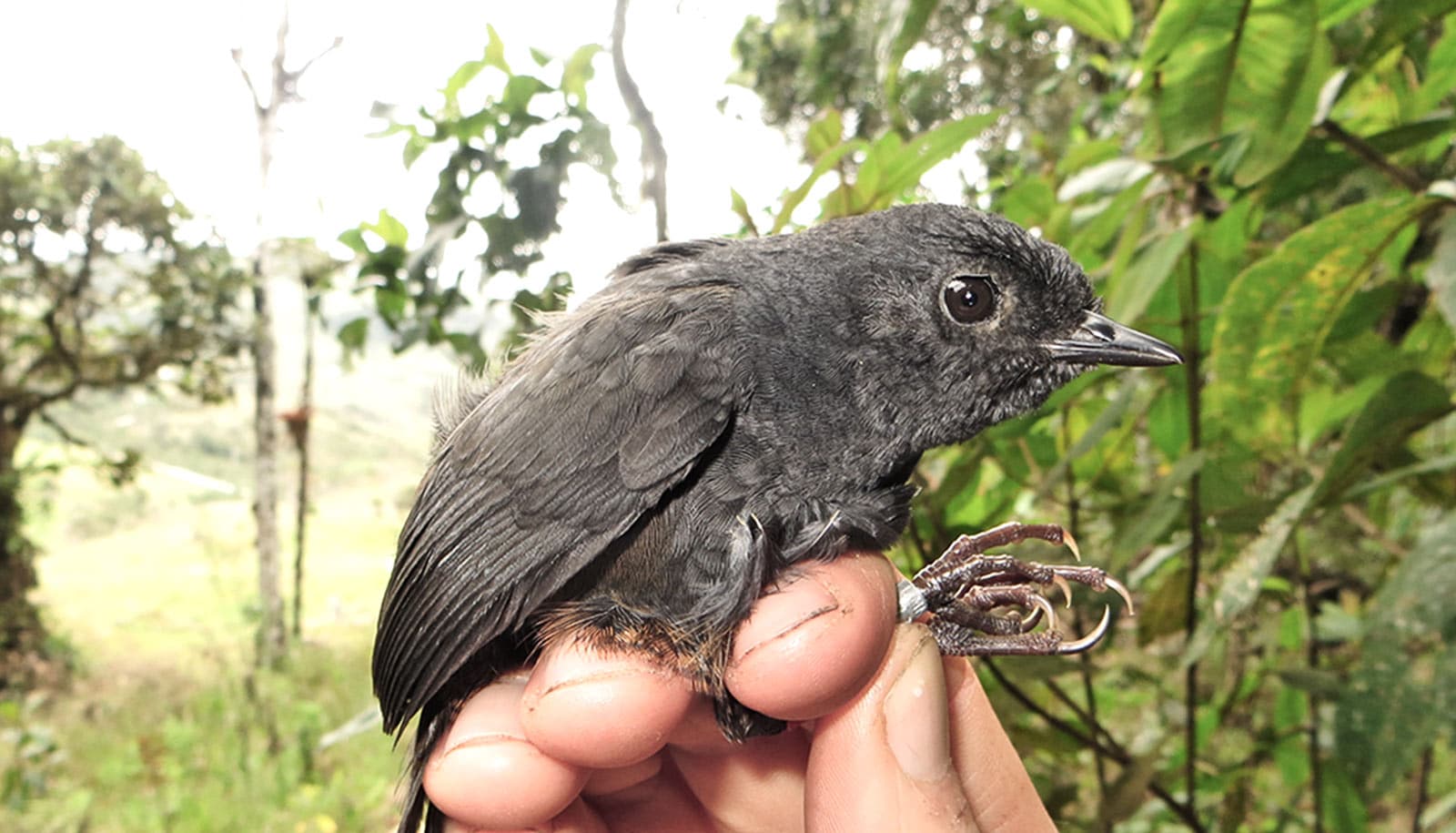Darkening just half of a building’s windows can make a big difference for migrating birds, a new study shows.
Every night during the spring and fall migration seasons, thousands of birds are killed when they crash into illuminated windows, disoriented by the light.
Using decades’ worth of data and birds collected by Field Museum scientists at Chicago’s McCormick Place convention center, researchers found that on nights when half the windows were darkened, there were 11 times fewer bird collisions during spring migration and six times fewer collisions during fall migration than when all the windows were lit.
“Our research provides the best evidence yet that migrating birds are attracted to building lights, often causing them to collide with windows and die,” says Benjamin Van Doren, a postdoctoral associate at the Cornell Lab of Ornithology and first author of the paper in the Proceedings of the National Academy of Sciences.
“These insights were only possible thanks to over 40 years of work by David Willard at the Field Museum, who led collisions and light monitoring efforts.”
‘40,000 birds later’
In 1978, Willard, the Field Museum’s collections manager emeritus, heard an offhand remark about birds hitting the McCormick Place, North America’s largest convention center, which is a mile south of the museum. So, he investigated.
“I went down early one morning, just out of curiosity, and wandered around and actually found four or five dead birds,” Willard says. “I might not have gone back if I hadn’t found anything that first day, and now here we are, 40 years later and 40,000 birds later.”
Willard and his colleagues, including Field Museum coauthor Mary Hennen and volunteers from the Chicago Bird Collision Monitors, have visited the site every day before sunrise during migration season, sometimes as early as 3:30 in the morning.
Some days there are just a few birds that hit McCormick Place’s glass windows; other times, there are hundreds. Willard collects the birds’ bodies and brings them back to the museum, where he records each one in a ledger and adds them to the museum’s collection.
About 20 years ago, Willard began to notice a pattern: On nights when the lights were out at McCormick Place, around holidays or construction work, there were fewer birds on the ground the next morning. As the building’s lighting patterns began to vary more, he began gathering data on which windows were illuminated each night, in addition to collecting the birds he found on the pavement.
Migrating birds in the sky
Benjamin Winger, an assistant professor in the University of Michigan department of ecology and evolutionary biology, assistant curator at the Museum of Zoology, and the paper’s senior author, started working with the collision data in relation to lighting levels at McCormick Place in 2018, and a year later was lead author of a study that focused mainly on differences in collision rates among different bird species.
“It was quickly clear that there was a general correlation between the amount of light at McCormick Place and the number of collisions,” Winger says. “But to really understand the relationship between artificial light at night and collisions, a more sophisticated analysis that also involved data on migratory passage from radar and weather patterns was required.”
So, Winger contacted Van Doren and Andrew Farnsworth at Cornell and Kyle Horton at Colorado State University, who were doing cutting-edge research on analyzing bird migration with radar, and suggested a collaboration.
The new study is the most in-depth use of the data to date, combining Willard’s specimens and lighting observations with other conditions that might play a role in bird mortality, including weather records and radar data revealing the number of birds in the sky on a given night.
“We developed a statistical model based on the number of windows illuminated at McCormick Place, weather conditions, migratory passage, and time of season. This allowed us to isolate the relationship between window lighting and collisions while accounting for these other factors,” Van Doren says. “By joining these different sources of data, we were able to understand how lights, weather, and migration each contribute to collision mortality.”
Bird-killing buildings
The team found that the total number of birds in the sky on a given night and the direction of the wind both play a role in mortality, but the biggest determining factor was light: When more windows were darkened, fewer birds died.
“The sheer strength of the link between lighting and collisions was surprising,” Van Doren says. “It speaks to the exciting potential to save birds simply by reducing light pollution.”
The researchers were able to quantify that bird-saving potential: They predict that halving the lighted window area could decrease collision counts by 11 times in spring and six times in fall. By turning out half the lights during migration seasons, bird mortality at McCormick Place could be reduced by 59%.
The researchers note that McCormick Place is far from unique—it’s heavily sampled due to its proximity to the Field Museum, but, Willard says, “there’s hardly an address in downtown Chicago that doesn’t have a bird in the Field Museum’s collection.”
However, there are a few factors that make the McCormick Center especially dangerous for birds, including its massive size, its isolation from other buildings, and its proximity to Lake Michigan, which birds are sometimes hesitant to fly over.
“Buildings all across North America, all across the world, are killing birds, and those add up,” says Doug Stotz, a senior conservation ecologist at the Field Museum. “What we’ve learned in the past 20 years about lights being on has caused the city of Chicago to create its Lights Out program, which requires buildings’ external lights to be turned off during peak migration.
“I hope this paper will show why it’s important to turn off internal lighting as well, especially in Chicago, which is the country’s deadliest city for migrating birds.”
Van Doren is also eager to see the project’s findings applied.
“Our study contains a hopeful message: We can save birds simply by turning off lights during a handful of high-risk days each spring and fall,” he says. “By adapting our existing public migration forecasts to identify nights with high collision risk, we will be able to issue targeted lights-out advisories several days in advance.”
In addition to the study’s implications for bird conservation, it also speaks to the importance of natural history collections in documenting global change, Winger says.
“These collision data are even more valuable because they are backed up by specimens that are available for study in the Field Museum,” he says. “This will allow future scientists to go a step further and study the connections between many aspects of avian biology and conservation-relevant questions.”
Source: Kate Golembiewski of the Field Museum for University of Michigan



